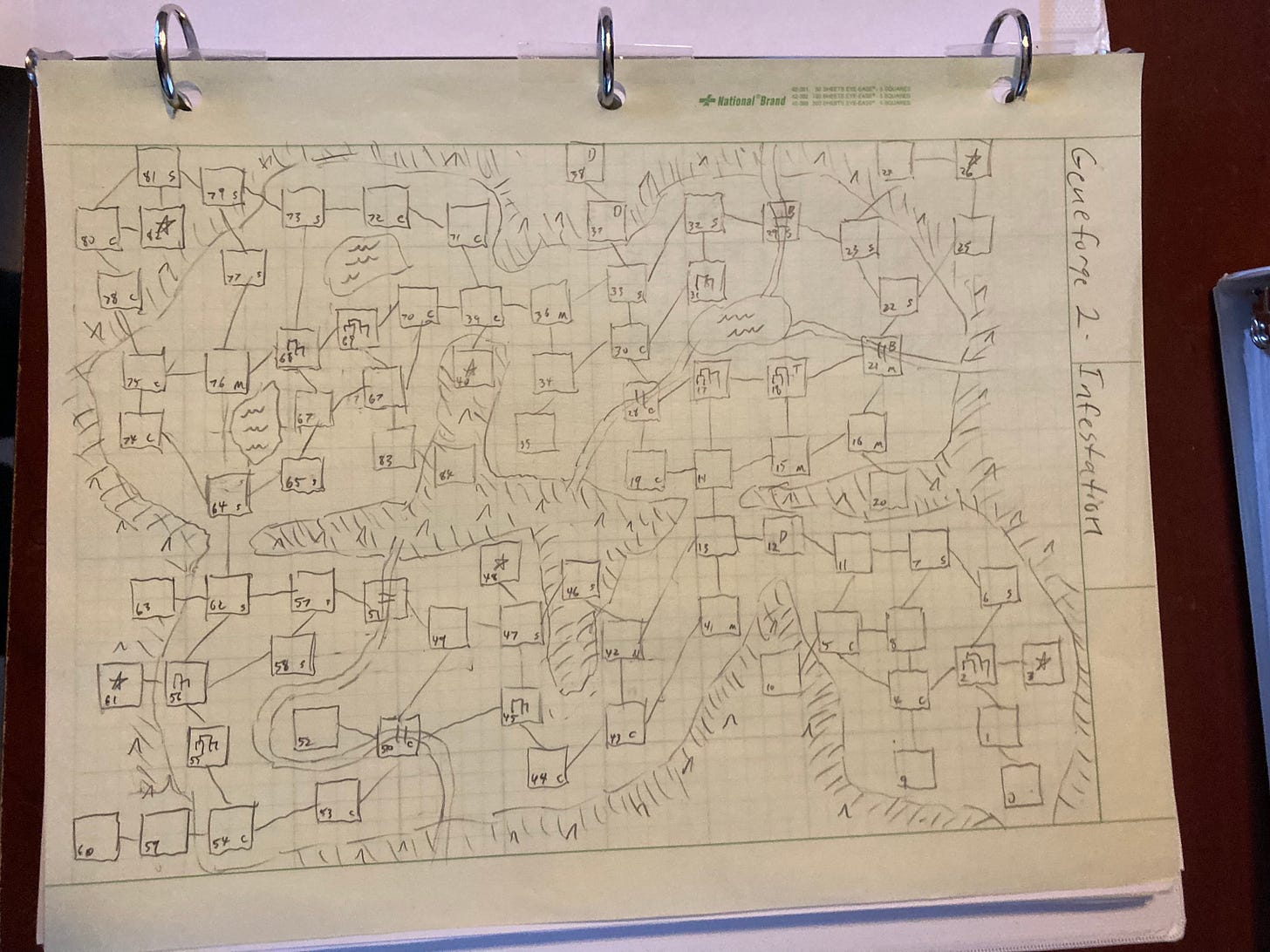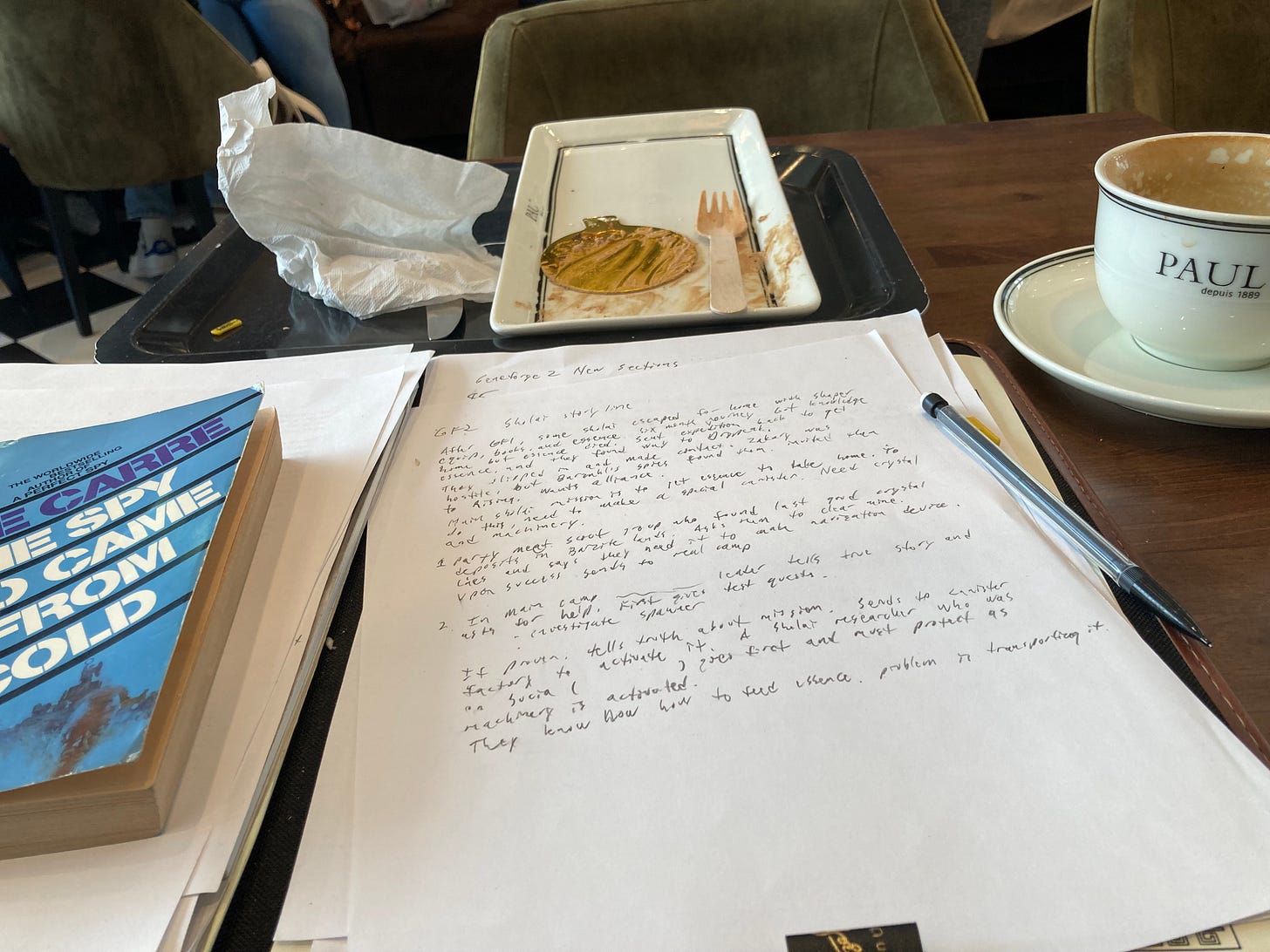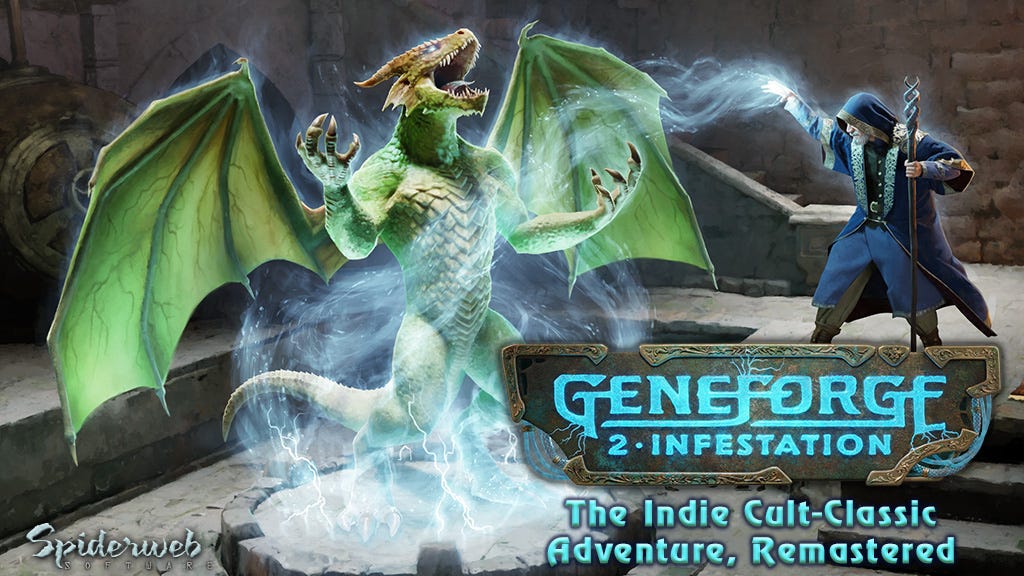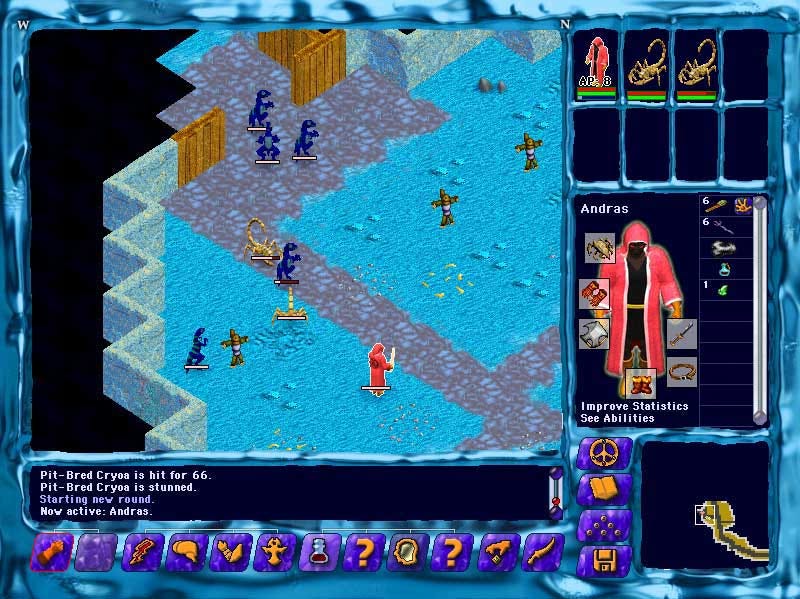Indie Postmortem 1: Geneforge 2 - Infestation. Funding and Building.
A weird development process that actually sort of works.
About a month ago, we released our newest indie RPG, Geneforge 2 - Infestation. Fan reaction has been really positive. Reviews are great. It's making decent money. We get to stay in business.
That's the quick summary.
The video game business is in a weird, scary, contracting, almost recessionary place right now. Nobody is sure what is going on. So this is a quick game release post-mortem. How did we fund, develop, and market this game? What were the results?
I started writing all this because I wanted to give some numbers and other results of our PR strategy. Then it bloated. I ended up writing a huge description of our entire creative process.
I'm posting it this way for two reasons. One, we do often get asked about our games-writing process, as it's solid enough to keep us going for 30 years. Second, we do a lot of things in weird ways, and I want to inspire creators to not back down from doing things in their own weird ways. Do what it takes to get the game out, dude!
I hope all this TL;DR is a little helpful for people who want to create stuff online. Or people who are foolhardy enough to want to make money writing games.
The Game In Question
We're Spiderweb Software. We started making indie RPGs in 1994, which was a long time ago. Over the years, we've built up a very kind and patient following of fans. Some people played our games as kids, grew up, had kids of their own, and now play our games with them.
Our new game is called Geneforge 2 - Infestation. It's a story-heavy, turn-based RPG, which is a very popular genre that doesn't get that many quality games. This game is a remaster of our popular cult-classic RPG called Geneforge 2 which came out in 2003. It's an unusual, unique, innovative game made with a budget of basically zero.
So we have a lot going for and against us. On the down side, we're a tiny company with no budget. On the up side, we have a fan base and decent name recognition. Bear these factors in mind when you try to learn from our experiences.
To fully understand the context of the information I give below, you should immediately buy 3 copies of Geneforge 2. One to play. One to have around in case the first copy loses its freshness. And one for your mom.

Our Previous Games
We've released a lot of titles in the 30 years we've been doing this nonsense.
Three years ago, we released Geneforge 1 - Mutagen, the remaster of Geneforge, which came out in 2001. It was a huge success for us, partly because of fan love for the series and partly because we've gotten really good at doing satisfying remasters.
Eighteen months ago, we released Queen's Wish 2: The Tormentor. This was an all-new title, the second game in what I had planned as the Queen's Wish trilogy. This game sold very poorly.
This was a shame. I'm really proud of the game. It's the sort of game I want to play, and I really liked playing it. However, in my advanced age, I may have fallen out of touch with what people want.
When I was younger, I always said, "I write the sort of games I want to play. If people don't want what I like to play, I'll quit this business and sell shoes." Luckily, since this didn't happen until I'm old, I'll do remasters instead.
(I WILL finish the Queen's Wish story somehow. I'm still figuring out a way to make it viable.)
So we went into Geneforge 2 with one hit and one miss behind us. We needed to make some money.

Months 1-2: Planning and Recovery
The two months after releasing a game are a time of refreshing. I forget everything about the previous game, and I load all of the facts about the new game into mental RAM. I do planning, which means covering piles of sheets of papers with notes. I play all the good games that came out over the previous year, looking for ideas to steal.
I also read a lot. I keep reading throughout the entire development of the game and will continue this for my entire life. It's a great source of ideas, inspiration, and pleasure.
Months 3-6 - Plan and Run Kickstarter
We funded Geneforge 2 - Infestation in part by doing a Kickstarter.
(The rest of our funding always comes from sales of the previous game. That is why we put out so many titles. When we put out a game, it starts a Death Clock, and we only have so much time to release the next game.)
If you have an established fan base, Kickstarter is an undervalued way to fund projects. Your Kickstarter serves as a fancy sort of presale, with extra money earned by selling to high level backers.
For our Kickstarter, we let backers get pins and stickers. At higher levels of support, they could also contribute names, magic items, and even quests to the game. We've been letting backers give ideas for 4 games now, and it's been a huge success. Our fans have great ideas, and I have a lot of fun turning them into playable game content.
The Kickstarter went live in February, 2023, did very well and made a nice chunk of cash. Kickstarter has been very important for keeping our business going, and we wish them a long life.
Our fans were happy with the physical merch, but it only made us a few thousand extra dollars. It was a fun experiment and we'll keep doing it sometimes, but it won't be a big part of our business.
We also paid a PR firm to do PR for our Kickstarter. We've done this in the past, and it worked then. It doesn't work anymore. Unless it is VERY exceptional, no reporter wants to write about a Kickstarter. Too many of them have come to nothing, and there are too many games to write about that actually exist. In the future, we will rely on our existing fans and PR outlets to push our Kickstarters.

Months 7-15 - Write a Game
Once we had some money in hand and proof that people cared, our next job was to write the bulk of the game.
This is the good time. We just go silent and make the game for a while.
We do some PR. I write blog posts and tweets. We have a few sales and send a few updates to our mailing list. However, PR is draining. It takes time and energy. At some point, I do need to vanish and fully concentrate on making a product. It's so peaceful. Ahhhh.
There is one hugely important PR job in this period, though. I have to get enough art together to make a decent trailer. Then we get our Steam page up and running. Making this eats about a week.
We announced our Steam page about 6 months before release: Trailer. Description. Screenshots. No firm release date yet. When that went live, we only announced it on our own pages and to our own socials and PR outlets. Hiring a PR person is expensive, so we saved that energy until we were close to release.
The job now was to start getting attention. And the tangible expression of attention: wishlists on Steam. They started trickling in. We contacted our PR people. We wanted to announce our release date in January, 2024 and release the game in March.
This carries us through the design, funding, and development process. Next time, we will look at the actual announcement, PR work, and shipping. There will be more firm numbers there. See you soon!
Spiderweb Software makes fun role-playing games and also has a mailing list and a Twitter and a Facebook if you want to learn when we do something big. Extra thanks to people who actually pay for this Substack. It gets me off my figurative butt and keeps me writing.





"Queen's Wish 3: The Microtransactions"
Just kidding. I *would* go in for an extra premium "Hey, This Is What It Costs If You Actually Want It To Be Completed" Kickstarter, though... I imagine the price elasticity of those of us in the Queen's Wish Fan Club is pretty darn low, given that we've been around for a while.
(I like the new resource mechanics perfectly well, but it's always been the story for me. So satisfying to play a game in which everybody has actual rational motivations that the game respects, but without coming off as a vacuous "whoa man, it's like, everybody's right from their point of view, they must all be equally valid" copout.)
It looks like I am a weirdo: every time you mention a game didn’t do well, it’s one of my preferred. Nethergate, then Queen Wish 😅 ok, sure, the Geneforge series is in a league of its own. Less so if one doesn’t play as a shaper though. I have always wondered why you did put those alternative classes. Where you afraid your potential customers would feel lost with the unorthodox shaping?